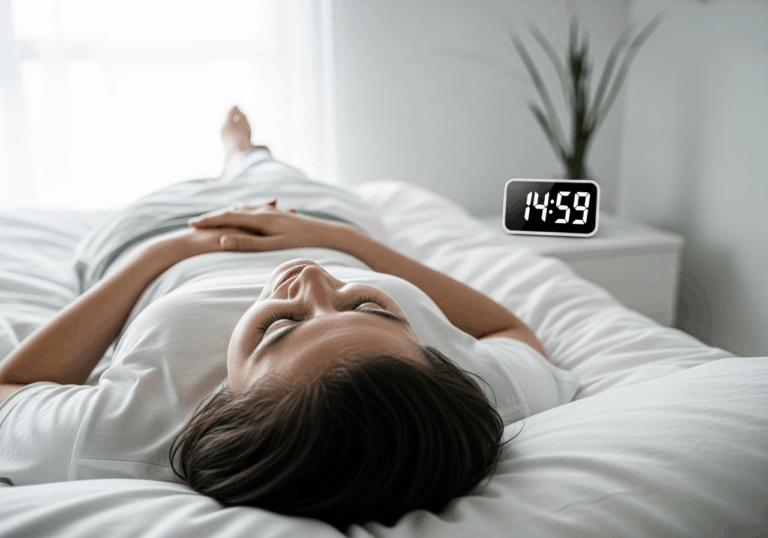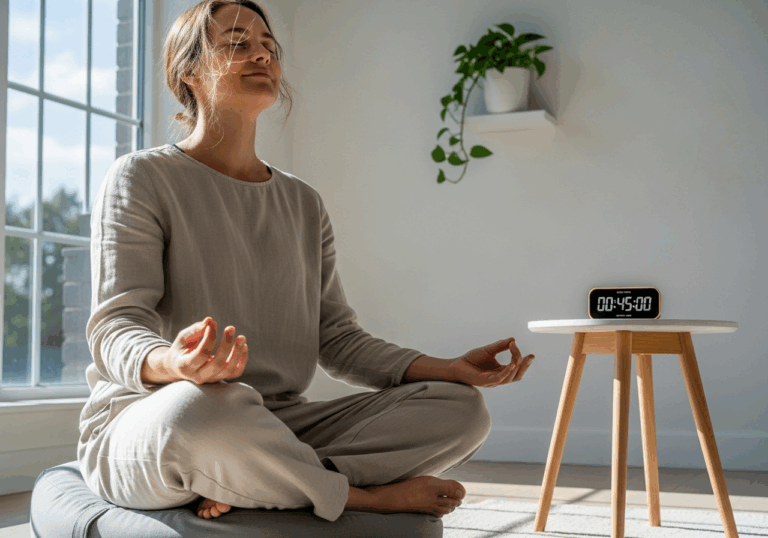Science-Backed Tips
Cognitive Distancing: A Simple Thought Technique
Reduce anxiety thought believability by 30% with this method.
📊 Did you know?
💡 Why It Matters
1️⃣
Reducing the believability of anxiety thoughts can lead to a 30% decrease in perceived anxiety.
2️⃣
Improved emotional flexibility allows individuals to engage more fully in daily activities without the burden of distressing thoughts.
3️⃣
Less reliance on thought control strategies may enhance overall mental health and wellbeing.
✅ Try These Micro-Tips
🎯
Practice cognitive distancing by prefacing distressing thoughts with ‘I am having the thought that…’ daily.
🎯
Engage in this exercise for at least 10 minutes each day to reinforce the technique.
🎯
Reflect on your mood before and after the exercise to track improvements.
🎯
Consider journaling your experiences to enhance self-awareness and emotional processing.
📚 The study
This finding is significant because it suggests that by diminishing the believability of anxious thoughts, individuals may experience less need to control or avoid these thoughts, ultimately leading to reduced anxiety levels and enhanced emotional flexibility.
With improved emotional flexibility, individuals can engage more fully in their daily activities without the weight of distressing thoughts holding them back.
Furthermore, a decreased reliance on thought control strategies can significantly enhance overall mental health and well-being. This study highlights the potential of cognitive defusion techniques as a practical tool for those struggling with anxiety, offering a pathway to a more liberated and fulfilling life.
❓ Frequently Asked Questions ❓
Learn more
What is cognitive distancing?
Cognitive distancing is a technique that involves separating oneself from distressing thoughts by acknowledging them as just thoughts. This practice can help reduce the believability of anxiety-related thoughts and improve emotional well-being.
How does prefacing thoughts with ‘I am having the thought that…’ help?
Prefacing distressing thoughts with ‘I am having the thought that…’ reduces their believability by approximately 30%. This reduction in believability can lead to improved mood and decreased anxiety.
What are the benefits of reducing the believability of anxiety thoughts?
Reducing the believability of anxiety thoughts can lead to a significant decrease in perceived anxiety levels. This can enhance emotional flexibility, allowing individuals to engage more fully in daily activities.
How often should I practice cognitive distancing?
It is recommended to practice cognitive distancing daily for at least 10 minutes. Regular practice can reinforce the technique and improve its effectiveness over time.
Can cognitive distancing improve my overall mental health?
Yes, less reliance on thought control strategies through cognitive distancing may enhance overall mental health and well-being. This approach allows for greater emotional flexibility and reduces the burden of distressing thoughts.
What should I do before and after practicing cognitive distancing?
Before practicing, reflect on your current mood to establish a baseline. After the exercise, assess your mood again to track any improvements in emotional state.
Is journaling helpful when practicing cognitive distancing?
Yes, journaling can enhance self-awareness and emotional processing while practicing cognitive distancing. It allows individuals to reflect on their experiences and track their progress over time.
What were the results of the study on cognitive distancing?
The study found that using the defusion technique resulted in a ~30% drop in believability scores for anxiety thoughts. This statistically significant result (p < .05) indicates the effectiveness of the technique.
How does cognitive distancing relate to emotional flexibility?
Cognitive distancing promotes emotional flexibility by reducing the need to control or avoid distressing thoughts. This flexibility allows individuals to respond more adaptively to their thoughts and feelings.
What is the significance of a 30% drop in believability scores?
A 30% drop in believability scores indicates a substantial reduction in the perceived threat of anxiety thoughts. This significant change can lead to improved mood and reduced anxiety levels.





